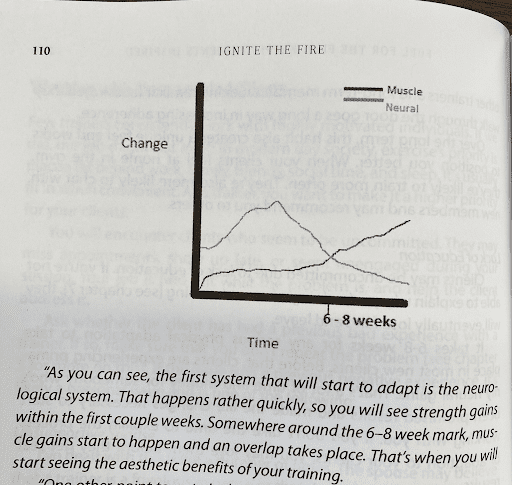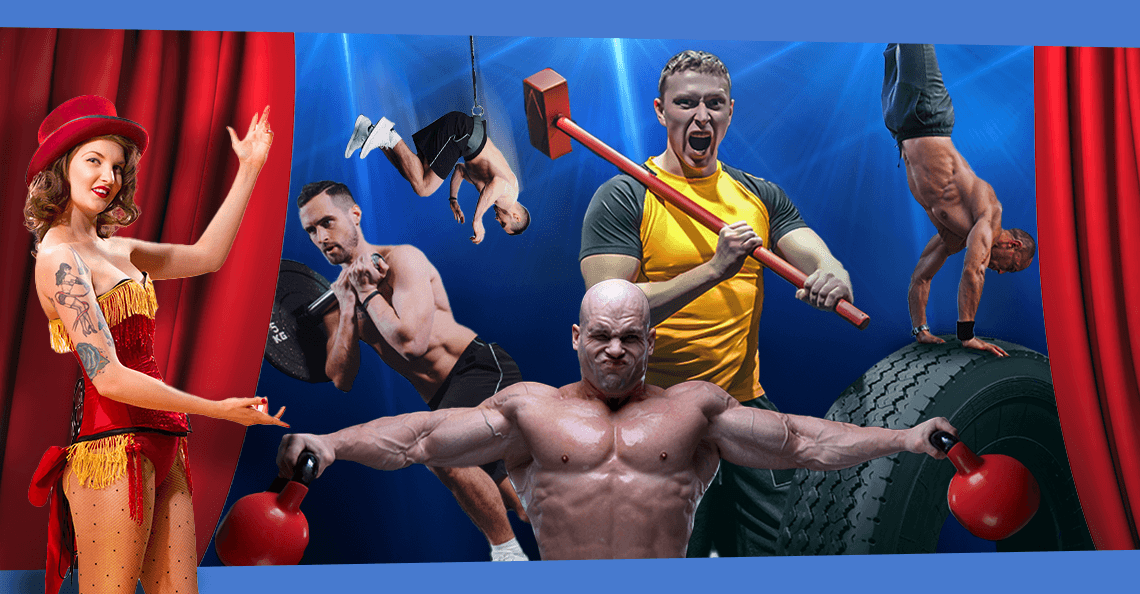Here’s an analogy to help you visualize the problem:
Imagine you go to a school where they teach you French on Monday, German on Wednesday, and Spanish on Friday.
In four weeks, how proficient would you be at German, French, and Spanish?
Not very, right?
Your focus would be too scattered.
Now think about your training programs. A well-designed program is more than a bunch of exercises. It never includes the latest circus movements.
A lack of focus is wrecking programs all around the world right now. We’re so worried about our clients getting bored that we prioritize variety over results.
But let’s be honest. It’s not always the clients who get bored. It’s the trainer. It’s you.
Read on to learn the lost art of creating remarkable programs.
A remarkable program follows the principles of adaptation
In order of importance, the principles are:
- Individualization
- Specificity
- Progressive overload
- Variation
- Adaptation
- Recovery
I’m only going to discuss the first four right now.
Did you notice that variation is fourth down on the list?
You can see what’s more important than changing up the exercise selection:
- Training that’s individualized to you
- With specific demands based on your goals
- Combined with progressive challenges that take you beyond your current capabilities
Here’s why I’m telling you this:
Our company offers the only fitness coaching service designed specifically for fitness professionals.
It’s called Online Trainer Coaching (OTC). And yeah, it’s good. I mean, it’s really good.
Each cycle of an OTC program lasts 12 weeks, with new workouts every four weeks. But even though the workouts are new, the movement patterns stay the same.
THE GOAL, according to Joe Dowdell, architect of the OTC program, is to “provide the minimal effective dose” to produce the adaptations you want without any of the things you don’t want, like excessive soreness or nagging injuries.
Watch this short (1 min) video for more on the principles of adaptation:
Let’s talk about intermuscular coordination!
In Phase 1, there isn’t much variety.
The number of workouts you get will depend on your goal and current fitness level. It might be three, or it might be just one.
Whatever it is, you’ll repeat those workouts each week for the first month.
We do it that way to facilitate a process called neurological adaptation.
That’s a lot of syllables to describe something every coach intuitively understands.
Do you remember this crude little chart from my first book, Ignite the Fire?

If you’re a science geek like me, here’s a bit more of the sciencey geeky stuff.
Three types of neurological adaptation occur with training:
- Improved intermuscular coordination
- Increased motor unit recruitment
- Changes in antagonist coactivation
The first two matter most.
Intermuscular coordination is the mechanism that drives almost all of your strength gains in the first three to four weeks, while motor unit recruitment becomes more of a factor in the next two months.
The first secret to great results is to optimize neuromuscular adaptation!
As important as neurological adaptations are, that’s not the only reason why we give you repeated exposure to the same movement patterns in Phase 1 of the OTC programs.
Phase 1 is also when you figure out how you’re responding. Are you getting progressively stronger? Are your movement patterns improving? Are you recovering between workouts?
That’s when we make adjustments.
If you change things up too early in a program, you never complete that initial neuromuscular adaptation phase. Without those adaptations, you limit the hypertrophic response that would normally follow.
Translation: Exercise variation too early in a new program kills your gainz.
We ramp it up in phases 2 and 3, based on your goals and how well you respond in Phase 1.
But even then, the movement patterns don’t change all that much. Here are the progressions we use:
- Increase resistance
- Increase volume
- Change the tempo
- Decrease rest periods
- Use more challenging variations of the movement patterns
- Change the exercise order
Respect the process and skyrocket your results!
Despite what InstaTrainers want you to believe, the latest circus variations won’t help you or your clients achieve your goals. What looks impressive on Instagram rarely produces equally impressive results.
Adaptation is a steplike process. Each step builds on what you achieved in the previous step.
The best trainers understand that. When you respect the process, your clients get results.










